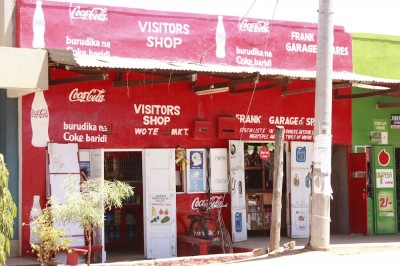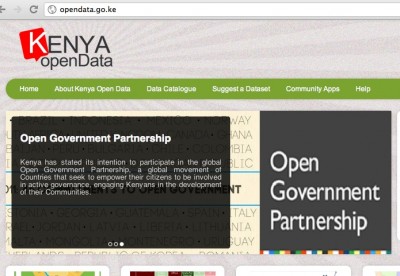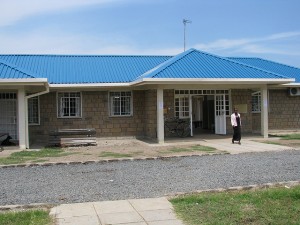Archive for the ‘innovation’ tag
Workshop: Designing Apps for the Masses (Inoorero University, Nairobi)
Developing mobile apps for service providers can have unique challenges. During this week’s workshop at Inoorero University, participants bumped into the reality of building a mobile app or services for service providers. It calls for an understanding of not only the immediate customer (the service provider) but also of their customer. These kinds of services can sometimes be soo focused on one group that they provide a poor experience for the other and yet both groups have to be kept happy to grow a sustainable business with a highly defensible business model.
Our workshops tour continues next month.
Message from Africa: We Have Money. We Will Buy.
This is the first of a four-part series on Africa, The Present Frontier.
The usual picture of Africa rarely includes middle class consumers and designer brands. In fact, it rarely portrays the other reality, the true potential that lies on the continent and in its people. Sadly, this robs many western brands off the opportunity to grow their businesses by establishing a presence on the continent. There’s a fast emerging middle class in Africa that has money and aspirations. Are there enough businesses supplying hope and the stuff they dream about?
In April 2011, the African Development Bank released a report on Africa’s Middle Class that showed the floating middle class has grown to over 20% of the population. This segment between the poor and the established middle class, is the only part of the economic pyramid that has had significant growth over the last 20 years achieving 100% growth in the last 30 years. They maybe susceptible to shocks that easily push them back into poverty but unlike their counterparts living in abject poverty, they have money to spend. With a population of 1 billion people, approximately 700million of whom have mobile devices, I can easily suppose a significant number of the floating class are connected. In itself, that is only important to telcos. However, it points to a growing trend everywhere else. An increasingly larger number of people with money to spend on connectivity (for whatever reason) signals a growing appetite for technology and services that connects people. It also signals a narrowing of the digital divide. Among many other signals emmanating from Africa, these two bode well for tech enterprise in Africa. Africa is attractive.
A number of brands in both tech and non-tech sectors have seen the signals from the continent and jumped on the opportunity to achieve phenomenal growth. Here are 7.
- Syngenta recently announced it’s intention to grow its Africa business to $1billion. The firm will invest $500million and grow its workforce by 700 over the next 10 years.
- Diageo has invested $1.5billion in Africa over the last 5 years. Their Kenyan unit, maker of the iconic Tusker beer brand, EABL was one of the first listed firms to breach the $1billion market capitalization milestone.
- Unilever currently earns over $3.5billion a year from its African operations and is working to double that within the next 5 years. A big part of their focus appears to be a push deeper into rural areas where a good number of the floating and middle income population live.
- Visa acquired South African payments firm Fundamo for $110million as part of their strategy to grow their business on the continent. Despite the apparent threat their business faces from mobile payments, Visa sees great potential on the continent and executives contend that mobile payments won’t put them out of business. The acquisition of Fundamo signals their intent to never let mobile out of their sight.
- Samsung grew revenues in Africa to $1.2billion by 2010 and began a push to grow this to $10billion by 2015 with investments of $140million on the continent. Africa is the fastest growing market for mobile phone market in the world.
- Designer cosmetics maker L’Oreal expects Africa’s middle class to double over the next 10 years. It aims to grow its market 10%-20% year on year until it attains a 16% market share in Africa.
- Nokia was until recently the world’s largest mobile phone vendor. It’s number 1 position is now held by Samsung. However, five years ago, Nokia’s sales in Africa were estimated at $7billion (according to Wikinvest). It’s ability to churn out devices that struck a chord with African consumers was legendary and is still one of the continent’s most recognizable brands.

CocaCola branded shop in Kenya's Makueni District. CocaCola is the most successful beverages and FMCG business in sub-Sahara Africa.
Macroeconomic signals emanating from the continent have of course played a big role in attracting foreign investment. GDP growth in African countries touches double digits in some countries, growth rate unlikely to be witnessed in developed economies where economic growth has stagnated for some and shrunk in others (hello Greece!). Driven by agriculture, tourism, minerals and financial services, economies on the continent have outperformed those in the west even during the worst of the recent financial crisis. Sub-sahara Africa in particular has seemed insulated from the chaos in financial markets in the rest of the world. Africa is growing.
Whilst the usual story about Africa has attracted non-profits and social entrepreneurs to the continent, the story of consumer aspirations, economic growth, political stability and an increasingly educated and savvy population has attracted their for-profit counterparts. Some of the social enterprises that have setup shop here have had great success whilst others have come to Africa to die. A good indicator of whether a social enterprise will succeed on the continent is sometimes determined by how effectively it communicates hope to its market. When marketing and communications departments use the same tone for fundraising in the west to sell merchandise in Africa, one can expect dismal results because the tone in the fundraising message is one of hopelessness and desperation.
For-profit enterprises have not had to struggle with this dual-message strategy. Their message is usually ‘Buy my great stuff’ or ‘My stuff will make you great’. Even when they deliver very little hope, it goes a longer way than low prices. Some big brands have learned this the hard way. Expecting to acquire huge market share by adopting a low-margin high-volume business model that was successful in India, Airtel was handed a rude shock by the continent and has had to go back to the drawing board.
As some have suggested, hope can make a big difference to those living in economic hardship sometimes resulting in higher spending. Africa has great aspirations. Some brands have known this all along and have been handsomely rewarded by customers in Africa. Here are two brands that have always had great success with the BoP customer in Africa.
- Safaricom is East Africa’s largest mobile phone company with the world’s most notable mobile money platform, MPesa. Here’s an ad campaign they have been running recently in Kenyan media. Even with the most expensive on-net calls Safaricom remains by far the largest network by subscriber numbers and revenue.
- Coca Cola has been very successful in Africa. Present in 56 countries and territories on the continent and with over 160 bottling plants this soft drinks maker has a distribution channel that is the envy of many in the fast moving consumer goods industry. In places where there is no medication, education or even healthcare, you may still find a Coke. Their advertising seeks to inspire and the results speak for themselves. Here’s an ad currently running on African television as part of their 1 Billion Reasons to Believe in Africa campaign.
Fast growing economies, a fast growing middle class, political stability and a growing ICT sector are current features of Africa that make it a great place to be for those seeking to expand. It is also increasingly attractive for technology businesses that understand the African customer or are willing to take the time to do so. Some of the top performing brands in Africa today understand this and have been on the continent for a long time. While everyone else was talking about Africa being the next frontier they saw Africa as the present frontier. It’s still early enough for businesses to establish a presence with new products and services that have not existed on the continent. Like Wonga launching it’s first international location in South Africa.
Africa is here. The message from Africa to the rest of the world is simple.
Have money. Will buy. Who’s selling?
Bringing Social Objects to Citizen Empowerment
Sparking conversations among citizens is the first step to creating change.
Kenyans woke up to a pleasant surprise one March morning. Graffiti with a political message sprayed on walls in Nairobi’s central business district. And not the terrible kind that is an eye-sore with good intentions. This was “stop-and-stare” graffiti that not only made news in Kenya but overseas as well.
Tweet
Corporate Big Data Should Team Up With Public Open Data
In the early days of the Obama administration, the idea of open data was transitioned from lofty ideal to a reality pushing huge amounts of government-held data onto public portals. What started in the US, however, became a global process. Many governments have since committed themselves to provide data to their citizens through similar portals and to abide by the principles of open government.
This coming June, Kenya will celebrate one year of open data and a portal that has grown to over 220 datasets and a total of 500 data elements (datasets, documents, charts etc). A number of interesting mobile and web apps have been created that utilize the data such as MedAfrica. Although there have been signs of some cool apps, the number of apps I expected one year on haven’t quite materialized. However, 12 months is a short time and the next couple of years could very well see the rise of novel applications and highly innovative ways of communicating public data to citizens or using it to add value to commercial apps.
Now that the government is publishing data online and will continue to do so as legislation is enacted to further reinforce this, what’s next? I say MORE DATA. Not just government data. It’s time for corporate big data to join the party. The private sector has a wealth of data gathered everyday from citizens around the country. The level of intelligence contained in corporate data is so vast, fresh and detailed I’m certain the staff at the national bureau of statistics salivate at the thought of getting their hands on it. So do local small businesses and start-ups. Although the data held by a single corporate entity on its customers may be detailed and extremely valuable, it becomes even more valuable when taken together with data from other corporate entities. Taken together with public open data, this data is priceless.
Corporate open data could have immense impact on consumer/citizen facing organizations in both for-profit and non-profit sectors. Here are some possibilities that come to mind
- Banking data e.g. insights into average deposit size by county, number of business accounts, penetration of banking services by geographic location and population (percentage of population with bank accounts).
- Consumer goods sales e.g data on consumption of goods by location, trends, average price of most popular product type.
- Telecommunications e.g. Airtime sales by location, average size of airtime purchase, average call length by location, average number of text messages per person by location, number of subscribers accessing the internet via mobile or via other devices etc
- Disease prevalence e.g. data from private healthcare facilities could provide additional information on number of cases diagnosed by disease, location and trends beyond the diseases that are most commonly observed at public facilities.
In an age where information is king, helping communities empower themselves and turn their fortunes around requires access to the right information. Information that allows them to understand why their counties attract low investment, or whether they have the infrastructure to leverage for economic development, or what their political leaders can do to improve their quality of life. The answers to these and many other questions lie not just in government data but in corporate data as well.
Empowering citizens to become more active in their own governance is a key principle of open government and one which open data reinforces well. Empowered citizens make empowered customers and (I’m pretty certain) makes for good business somehow. It is possible that corporate social responsibility on this side of the industrial age may include providing data to the public that could help them change their world. Isn’t that a possibility East African businesses should consider investing in just as their governments are doing?
Will Open Data Give Rise to Great Stuff?
There’s a health center in my village. I don’t know how many health care workers have been assigned to it, how much money it was allocated in the last fiscal year, how many people it serves or who’s in charge. I don’t know what the mortality rate is in my county or how we measure up when compared to the neighboring counties. If nothing changes, I probably never will.
Tweet



